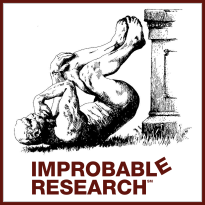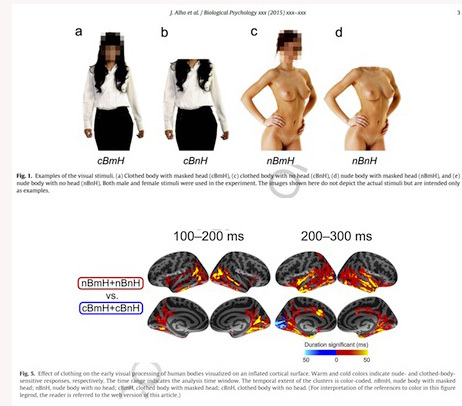Marc Abrahams's Blog, page 328
May 22, 2015
Conscientiousness with Fellatio as a Mate-Retention Activity
Conscientiousness and aggreeableness are key to whether women are able to keep up a relationship with a mate, if fellatio is involved, suggests this new study:
“Women’s mate retention behaviors, personality traits, and fellatio,” Yael Sela [pictured here, above], Todd K. Shackelford [pictured here, below], Michael N. Pham, Virgil Zeigler-Hill, Personality and Individual Differences, vol. 85, October 2015, pp. 187–191. The authors, at Oakland University, Rochester, Minnesota, in report:
“Women perform oral sex on their male partner (i.e., fellatio) as part of a Benefit-Provisioning mate retention strategy, and women’s personality predicts their interest in, and time spent, performing fellatio. We explored whether women’s mate retention behavior mediates the relationship between their personality traits and their performance of fellatio in a long-term romantic relationship.
Women (n = 401) reported their personality traits, the frequency with which they performed mate retention behaviors during the past month, and their interest in and the time they spent performing fellatio on their partner during their most recent sexual encounter. The results indicate that women higher in Conscientiousness spend more time performing fellatio on their partner, and this relationship is mediated by their Benefit-Provisioning mate retention. Women higher in Agreeableness report greater interest in performing fellatio on their partner…. The current research is the first to investigate the relationship between women’s personality traits and oral sex behaviors…”
Here’s further, graphic detail from the study:

42 (in an accountingisation context)
 What are the meaning(s) and context(s) of intellectual capital (IC) numbers? Specifically the number 42? The number which, as those familiar with The Hitchhiker’s Guide to the Galaxy will know, was the (eventual) answer given by the gargantuan computer Deep Thought in response to “The Ultimate Question of Life, the Universe, and Everything”.
What are the meaning(s) and context(s) of intellectual capital (IC) numbers? Specifically the number 42? The number which, as those familiar with The Hitchhiker’s Guide to the Galaxy will know, was the (eventual) answer given by the gargantuan computer Deep Thought in response to “The Ultimate Question of Life, the Universe, and Everything”.
John Dumay PhD (Economics) Sydney, EMBA AGSM, MA (Bus. Research) MGSM, GC (Higher Ed.) Sydney, CPA, who is Associate Professor in Accounting at Macquarie University, Australia, chose the number in order to examine what he calls the “Accountingisation” of intellectual capital. His paper, succinctly and precisely entitled “42” is published in the journal SAGE Open, January-March 2015.
Bonus amusement. How many other standard English words can you think of which have a double ‘h’ as in Hitchhiker?

May 21, 2015
“The more we learn, the less we understand”
“The more we learn, the less we understand,” says geneticist Steve Jones about genes and genetics, in this Lost Lecture:
David Dobbs pursues this theme in the essay “Weighing The Promises Of Big Genomics“, in Buzzfeed:
…“Many genes of small effect” became a sort of tepid curse. I myself prefer the stronger, more memorable phrase “Many Assorted Genes of Tiny Significance,” or MAGOTS — a mass of barely significant genes explaining little.
MAGOTS infest most GWA studies for a simple, brutal reason: If a gene variant reliably plays a large role in causing disease, both the variant and the disease it causes tend to be rare, because its carriers tend to die without leaving offspring. This is why the genetic contributions for common diseases and conditions usually come from MAGOTS — the effects of which, it bears repeating, are usually maddeningly obscure and unpredictable. This applies even to diseases and traits that run in families. Take height: Hundreds of genes of small effect, few clues to how they contribute, and no real target to tweak if, say, you want to make someone tall. The best way to engineer a tall person? Tell two tall people to tango.
Similarly, deep digs at cancer, schizophrenia, heart disease, hypertension, diabetes, intelligence, bipolar disorder, and height have found mostly MAGOTS….
So let me offer a hype filter. This one comes courtesy of the oceanographer Henry Bryant Bigelow, who helped found Woods Hole Oceanographic Institute. A century ago, Bigelow opened a letter his brother had written him from Cuba. His brother reported that while weathering a hurricane there, he had seen, flying by, what he was almost sure was a donkey.
With three words, Bigelow gently told his brother he didn’t quite believe him — and stated a maxim for maintaining the ever-curious but ever-skeptical stance that marks the good scientist.
“Interesting if true,” he wrote.

In a pro basketball game, when is a lead safe?
In a pro basketball game, when is a lead safe? This analysis
“Safe Leads and Lead Changes in Competitive Team Sports,” Aaron Clauset [pictured here], M. Kogan, and S. Redner, arXiv:1503.03509v1 [stat.AP] 11 Mar 2015. (Thanks to Marcos Carreira for bringing this to our attention.) The authors, at the University of Colorado, the Santa Fe Institute, and Boston University, report:
“We investigate the time evolution of lead changes within individual games of competitive team sports. Exploiting ideas from the theory of random walks, the number of lead changes within a single game follows a Gaussian distribution. We show that the probability that the last lead change and the time of the largest lead size are governed by the same arcsine law, a bimodal distribution that diverges at the start and at the end of the game. We also determine the probability that a given lead is “safe” as a function of its size L and game time t. Our predictions generally agree with comprehensive data on more than 1.25 million scoring events in roughly 40,000 games across four professional or semi-professional team sports, and are more accurate than popular heuristics currently used in sports analytics….
The kicker is in their conclusion:
“Cynically, our results suggest that one should watch only the first few and last few minutes of a professional basketball game; the rest of the game is as predictable as watching repeated coin tossings. On the other hand, the high degree of unpredictability of events in the middle of a game may be precisely what makes these games so exciting for sports fans.”
Here’s further detail from the paper:
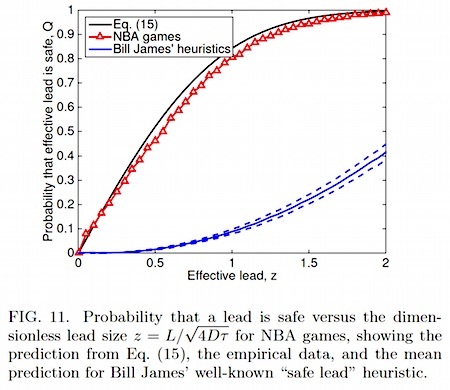
The paper also explores the same question as it plays out in other sports — American college football, American pro football, and professional hockey — where the answer is not so dismaying.

Dignity and intelligence of plants
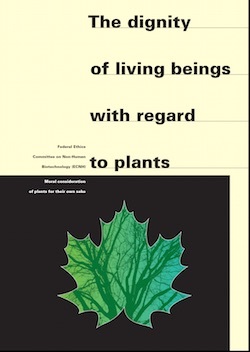 Plants not only have dignity, as enshrined in Swiss law and explained in the pamphlet The Dignity of Living Beings with Regard to Plants. Plants are intelligent, in ways some humans are slow to recognize. That first notion was honored with the an Ig Nobel Peace Prize, the second notion is explored in a new book called Brilliant Green: The Surprising History and Science of Plant Intelligence.
Plants not only have dignity, as enshrined in Swiss law and explained in the pamphlet The Dignity of Living Beings with Regard to Plants. Plants are intelligent, in ways some humans are slow to recognize. That first notion was honored with the an Ig Nobel Peace Prize, the second notion is explored in a new book called Brilliant Green: The Surprising History and Science of Plant Intelligence.
The 2008 Ig Nobel Prize for peace was awarded to The Swiss Federal Ethics Committee on Non-Human Biotechnology (ECNH) and the citizens of Switzerland for adopting the legal principle that plants have dignity.
The book Brilliant Green is written by Stefano Mancuso [profiled in the video, below], a plant behaviorist, and Alessandra Viola [pictured here], a science journalist.
Here’s part of an interview with Mancuso, by Lindsay Abrams, in Salon:
Are
there things that you’re still trying to prove or haven’t been able to figure out? Can you be sure whether there’s really intention there?
Today in my lab, we are studying in two different, let’s say parallel, ways. One is the social relationship among plants. I think that would be incredibly interesting to try to explain how plants behave differently according to their neighbors. If the neighbors are relatives, there is a kind of behavior. If they are strangers, there is a completely new, completely different behavior. This is something that we are trying to find, how the plants are able to recognize the plants around them and how they can change their behavior accordingly.
The second point is memory and learning. This is the most important and the most fascinating. At the beginning of the past year, we published a paper where we were able to demonstrate that the plants were able to learn — for example, that a specific stimulus was not dangerous. They were able also to learn not to react, not to spend energy responding to a non-dangerous stimulus. What was incredibly surprising for us was that we left plants completely undisturbed for almost two months; at the end of the second month, the plants were all the time remembering that a specific stimulus was not dangerous. What we learned from that experiment was that plants had a memory. We don’t know how they can memorize, because they have no brain. There should be another, completely new system to store information that could be incredibly interesting to find out. The other thing we want to find out is how long this kind of memory is. Two months is a lot. Just to give you an example, in insects, the average length of the memory of information is 24 hours.

May 20, 2015
Tintin’s health traumas, analyzed
Here’s a new medical analysis of the health of a comics character, following in the tradition of the 2004 study “Acquired Growth Hormone Deficiency and Hypogonadotropic Hypogonadism in a Subject With Repeated Head Trauma, or Tintin Goes to the Neurologist“:
“Tintin’s travel traumas: Health issues affecting the intrepid globetrotter” Les problèmes de santé de Tintin : plus de traumatismes que de pathologies du voyageur], Eric Caumes [pictured below], Loïc Epelboin, France Leturcq, Phyllis Kozarsky, Peter Clarke, La Presse Médicale, epub May 11, 2015. The authors, at institutions in France, the USA and the UK, report:
Despite the highly hazardous life-style led by comic book characters such as Tintin, we are unaware of any previous systematic description of the challenges and health impairments faced by Tintin in the course of his adventures.
Methods —We evaluated the spectrum of health impairments (HIs) that Tintin sustained in his 23 adventures as well as their causes, consequences, and relation to travel. We diagnosed Tintin’s HIs according to descriptive terms in the text. We then classified HIs as traumatic and non-traumatic, and distinguished between intentional (those perpetrated by others) and unintentional events.
Results — We found 236 events leading to 244 HIs, 13 kidnappings, six hospitalisations and two surgical procedures. There was a median of 8 HIs/adventure (range 1–30/adventure). The mean number of HIs per adventure was much greater before 1945 than subsequently (14.9 vs. 6.1; P = 0.002), which was also true of the number of kidnappings (11 vs. 2; P = 0.001). Of the 244 HIs, there were 191 cases of trauma (78.3%) and 53 non-traumatic problems (21.7%). The most common form of trauma was concussion (62%) whereas the most common forms of non-traumatic problems were sleep problems (15.1%), depression/anxiety (13%), and gas or chloroform poisoning (13%). Overall, we found 46 losses of consciousness (LoC), including 29 traumatic and 17 non-traumatic LoCs.

Podcast #12: Ostrich courtship of humans
Ostriches, sea monsters, and sex figure heavily in this week’s Improbable Research podcast.
LISTEN on Play.it or iTunes (or DOWNLOAD it, and listen later).
SUBSCRIBE on Play.it or iTunes, to get a new episode every week, free.
[NEWS: Soon, the podcast will also be available on Spotify.]
This week, Marc Abrahams tells about:
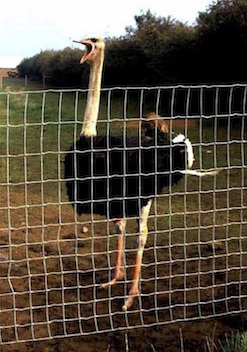 Ostrich courtship of humans, and also sea serpent mistakes.
(Charles Paxton / Bubier, N. E., C. G. M. Paxton, P. Bowers, and D. C. Deeming. “Courtship behaviour of ostriches (Struthio camelus) towards humans under farming conditions in Britain.” British poultry science 39, no. 4 (1998): 477-481. / Paxton, C. G. M., Erik Knatterud, and Sharon L. Hedley (2005). ‘Cetaceans, Sex and Sea Serpents: An Analysis of the Egede Accounts of a “Most Dreadful Monster” Seen Off the Coast of Greenland in 1734.’ Archives of Natural History 32 (1): 1–9. Featuring dramatic readings by Jean Berko Gleason.)
Ostrich courtship of humans, and also sea serpent mistakes.
(Charles Paxton / Bubier, N. E., C. G. M. Paxton, P. Bowers, and D. C. Deeming. “Courtship behaviour of ostriches (Struthio camelus) towards humans under farming conditions in Britain.” British poultry science 39, no. 4 (1998): 477-481. / Paxton, C. G. M., Erik Knatterud, and Sharon L. Hedley (2005). ‘Cetaceans, Sex and Sea Serpents: An Analysis of the Egede Accounts of a “Most Dreadful Monster” Seen Off the Coast of Greenland in 1734.’ Archives of Natural History 32 (1): 1–9. Featuring dramatic readings by Jean Berko Gleason.)Improbable Medical Review. (“A Unique Case of Human Ophthalmic Acariasis Caused by Orthohalarachne attenuata (Banks, 1910) (Acari: Halarachnidae),” James P. Webb, Jr., Deane P. Furman, and Samuel Wang, Journal of Parasitology, vol. 71, no. 3, June 1985, pp. 388–9 / “Medical Training as Adventure-Wonder and Adventure-Ordeal: A Dialogical Analysis of Affect-Laden Pedagogy,” Anne Madill and Paul Sullivan, Social Science and Medicine, vol. 71, 2010, pp. 2195–203. Featuring dramatic readings by Richard Baguley.)
Icky-Cutesy Research Review [research by and for teenage boys of all sexes and ages]. (“Flies in the Face of Adversity,” Mark Fellowes and Kerry Hutcheson, The Biologist, vol. 48, no. 2, April 2001, pp. 75–8. / “Try It, You’ll Like It: The Influence of Expectation, Consumption, and Revelation on Preferences for Beer,” Leonard Lee, Shane Frederick, and Dan Ariely, Psychological Science, 2006, vol. 17, no. 12. / “Penetrating Eye Injury Caused by a Golf Tee,” Alan Mulvihill, Jane O’Sullivan, and Patricia Logan, British Journal of Ophthalmology, vol. 81, 1997, p. 91. Featuring dramatic readings by Maggie Lettvin.)
Boys Will Be Boys [research by and for teenage boys of all ages and sexes]. (“Chemical Processes in the Deep Interior of Uranus,” Ricky Chau, Sebastien Hamel, William J. Nellis, Nature Communications, vol. 2, no. 2, epub ahead of print, February 22, 2011. / “The Relation Between Sexual Orientation and Penile Size.” Anthony F. Bogaert and Scott Hershberger, Annals of Sexual Behavior, vol. 28, no. 3, 1999, pp. 213–21. / “What Makes Buttocks Beautiful? A Review and Classification of the Determinants of Gluteal Beauty and the Surgical Techniques to Achieve Them,” Ramon Cuenca-Guerra, and Jorge Quezada, Aesthetic Plastic Surgery, vol. 28, 2004, pp. 340–7. / “Potty-Talk in Parisian Plays,” Elizabeth K. Menon, Art Journal, vol. 52. no. 3, fall 1993, pp 59–64. / “Sexual Harassment of a King Penguin by an Antarctic Fur Seal,” P.J. Nico de Bruyn, Cheryl A. Tosh, and Marthán N. Bester, Journal of Ethology, vol. 26, no. 2 , May 2008, pp. 295–7. / “Unusual Foreign Body In Urinary Bladder: A Case Report,” G. Vezhaventhan and R. Jeyaraman, Internet Journal of Urology. vol. 4, no. 2, 2007. Featuring dramatic readings by Melissa Franklin.)
Brain Damage for Gamblers. (“Investment Behavior and the Negative Side of Emotion,” Baba Shiv, George Loewenstein, Antoine Bechara, Hanna Damasio, and Antonio R. Damasio, Psychological Science, vol. 16, no. 6, June 2005, pp. 435–9. Note: this is a much closer look at something we mentioned a few weeks ago. Featuring dramatic readings by Jean Berko Gleason.)
The mysterious John Schedler perhaps did the sound engineering this week.
The Improbable Research podcast is all about research that makes people LAUGH, then THINK — real research, about anything and everything, from everywhere —research that may be good or bad, important or trivial, valuable or worthless. CBS distributes it, both on the new CBS Play.it web site, and on iTunes (and soon, also on Spotify).

Finnish solution of the nude body / brain question
A team of Finnish researchers reached new partial understanding of how human brains react to nude bodies. They published a study about it:
“Facilitated early cortical processing of nude human bodies,” Jussi Alho, Nelli Salminen, Mikko Sams, Jari K. Hietanen, Lauri Nummenma, Biological Psychology, epub May 7, 2015. (Thanks to Neil Martin for bringing this to our attention.) The authors at Aalto University, the University of Tampere, and the University of Turku, Finland, report:
“it remains unresolved whether nude and clothed bodies are processed by same cerebral networks or whether processing of nude bodies recruits additional affective and arousal processing areas. We recorded simultaneous MEG and EEG while participants viewed photographs of clothed and nude bodies. Global field power revealed a peak ∼145 ms after stimulus onset to both clothed and nude bodies, and ∼205 ms exclusively to nude bodies. Nude-body-sensitive responses were centered first (100–200 ms) in the extrastriate and fusiform body areas, and subsequently (200–300 ms) in affective-motivational areas including insula and anterior cingulate cortex. We conclude that visibility of sexual features facilitates early cortical processing of human bodies, the purpose of which is presumably to trigger sexual behavior and ultimately ensure reproduction.”
Here’s further detail from the study:
BONUS (possibly unrelated): Measuring a person’s incoherence

Measuring a person’s incoherence
 People can sometimes be (or at least come across as) incoherent. Raising the question, is it possible to measure a person’s incoherence, absolutely? For answers, turn to a prominent investigator in the field, Liam Kofi Bright who is a 3rd year Philosophy PhD student at Carnegie Mellon University, US, and who has written a paper on the subject, entitled: Measuring Degrees of Incoherence.
People can sometimes be (or at least come across as) incoherent. Raising the question, is it possible to measure a person’s incoherence, absolutely? For answers, turn to a prominent investigator in the field, Liam Kofi Bright who is a 3rd year Philosophy PhD student at Carnegie Mellon University, US, and who has written a paper on the subject, entitled: Measuring Degrees of Incoherence.
“I discuss the construction of ‘measures of incoherence’. These measures allow theorists to give a precise sense to the idea that agents can violate norms of probabilistic reasoning more or less severely. I will discuss previous attempts at providing such a measure, the reasons one might want such a measure, and how those objectives place different (and sometimes conflicting) constraints on the character of the measure one ought pick. I argue that degree of incoherence is best viewed as purpose-dependent. That is to say, there is no absolute measure of incoherence but, rather, how incoherent we ought view a person depends on the purpose for which we have decided to evaluate them.” [our emphasis]
Also see (possibly partially related) The Index of Garbledness.
BONUS (possibly unrelated): Finnish solution of the nude body / brain question

PR of the week: Video game-playing might cause Alzheimer’s disease
This week’s Impressively-Complicated-Chain-of-Logic Press Release of the Week implies that playing video games might cause Alzheimer’s disease. Or, more precisely, it says that no one has ruled out the possibility that playing video games causes or might cause Alzheimer’s disease.
It’s complicated. McGill University issued the press release, which says:
“For more than a decade now, research has demonstrated that action video game players display more efficient visual attention abilities, and our current study has once again confirmed this notion,” says first author Dr. Gregory West [pictured here]. “However, we also found that gamers rely on the caudate-nucleus to a greater degree than non-gamers. Past research has shown that people who rely on caudate nucleus-dependent strategies have lower grey matter and functional brain activity in the hippocampus. This means that people who spend a lot of time playing video games may have reduced hippocampal integrity, which is associated with an increased risk of neurological disorders such as Alzheimer’s disease.”
Because past research has shown video games as having positive effects on attention, it is important for future research to confirm that gaming does not have a negative effect on the hippocampus. Future research using neuroimaging will be necessary to further qualify our current findings, and these studies should investigate the direct effects of specific video games on the integrity of the reward system and hippocampus.
The key phrase: “it is important for future research to confirm that gaming does not have a negative effect on the hippocampus“.
The study is:
“Habitual action video game playing is associated with caudate nucleus-dependent navigational strategies,” Greg L. West, Brandi Lee Drisdelle, Kyoko Konishi, Jonathan Jackson, Pierre Jolicoeur, Veronique D. Bohbot,” Proceedings of the Royal Society B 2015 282 20142952; Published 20 May 2015.
Reports in the The Telegraph and the Daily Mail add importance to the discovery, with the headlines “Call of Duty increases risk of Alzheimer’s disease” and “Could video games increase your risk of Alzheimer’s? Navigating virtual worlds can reduce grey matter and make you prone to mental illness, claims study“.
BONUS (possibly unrelated): Heeled shoes might cause szhizophrenia

Marc Abrahams's Blog
- Marc Abrahams's profile
- 14 followers




